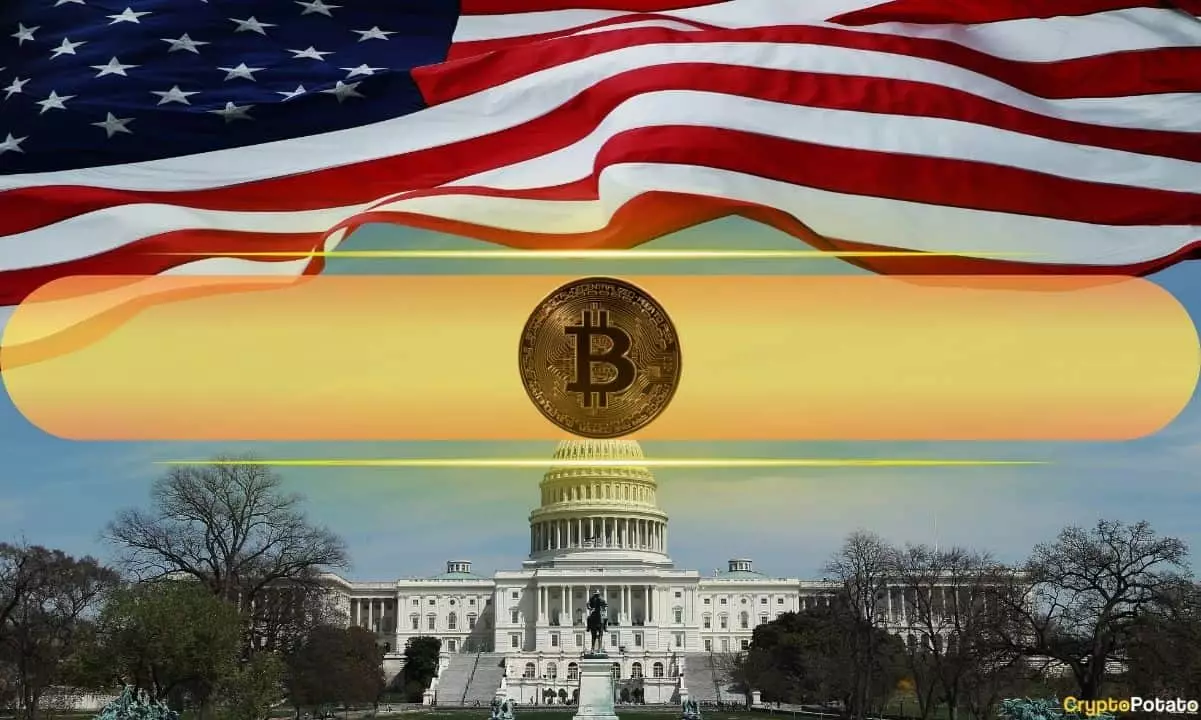In an age of digital innovation, the political and financial landscape worldwide is undergoing rapid transformation. The Trump administration’s daring initiative to explore the establishment of a U.S. Bitcoin Reserve signals a revolutionary approach to government funding—a vision that not only embraces cutting-edge technology but also seeks to liberate taxpayers from the financial shackles of overregulation. The concept, introduced by Bo Hines, the Executive Director of the President’s Council of Advisers on Digital Assets, goes beyond conventional fiscal strategies, promoting financial independence through alternative revenue streams.
This endeavor reflects a daring pivot from traditional fiscal methods, significantly considering Bitcoin as a viable reserve asset. Instead of tapping out existing budgets or draining public coffers, officials are looking to utilize funds from tariffs and potential adjustments in gold reserves, fundamentally altering the way government financial mechanisms operate. The audacity of revaluing gold certificates—currently priced at a meager $43 per ounce—reveals potential to generate significant paper wealth. The proposition to adjust that price to contemporary market value of around $3,200 per ounce represents a goldmine of opportunity that could power the U.S. Bitcoin Reserve.
A Wolf in the Tariff’s Clothing
The reasoning behind integrating future tariff revenues into this Bitcoin strategy is particularly compelling. Tariffs offer a unique external stream that does not affect current taxpayer funding, effectively allowing the government to accrue Bitcoin without the burden of direct taxation. Many might scoff at the notion of relying on tariffs, but in a global economy increasingly characterized by trade adjustments, this strategy could very well redefine our perception of fiscal responsibility.
The government’s ability to harness tariff revenues as a funding method is not just bold; it’s necessary. Conventional taxation often results in red tape and bureaucratic inefficiencies, processes that fail to address the rapid growth of the cryptocurrency market. By embracing a proactive, resourceful mindset, the Trump administration could pave a new path forward that diminishes taxpayer burden while enhancing the nation’s position in the digital assets landscape.
Blockchain as the Future of Financial Interaction
Hines’ reflections on the inadequacies of the traditional banking system resonate strongly with a public exhausted by hidden fees, sluggish transactions, and a complete lack of transparency. Embracing blockchain technology offers a feasible solution to these challenges, ushering in a new era where users control their wealth more than ever. The administration’s aspiration to position the U.S. as the “crypto capital of the world” is not merely a campaign promise but a visionary objective that seeks to elevate the nation to the forefront of financial modernization.
Importantly, this isn’t just about Bitcoin; it emphasizes a more comprehensive national digital asset framework. A well-considered policy could encompass critical issues likened to tokenization and stablecoins, ensuring clarity and robust regulation that encourages investment and innovation. Only through intelligent governance can we hope to realize the full potential of digital assets.
Potential Pitfalls and Congressional Approval
While the ambitious proposals of the Trump administration hold promise, they are not without their hurdles. Despite the administration’s openness to creative avenues, many details remain obscured in the fog of congressional approval. The passage of legislative initiatives like the Bitcoin Act of 2025 could stall under political gridlock or within the complexities of bipartisan negotiations. Yet, this presents a crucial opportunity for lawmakers to step away from the quagmire of regression and embrace progress—an act that would affirm their commitment to fiscal innovation and economic resilience.
It’s crucial to advocate for bipartisan dialogue on such issues rather than allowing politics to inhibit the exploration of novel economic strategies. A united front could transform the way we view taxation, investment, and wealth management, creating pathways toward a more efficient and liberated financial system.
With the administration valuing innovation and foresight, one can only hope that the vision for a U.S. Bitcoin Reserve not only sparks conversation but also ignites action. Ultimately, we find ourselves on the brink of financial evolution—an evolution that champions individual freedom and economic fluidity.

